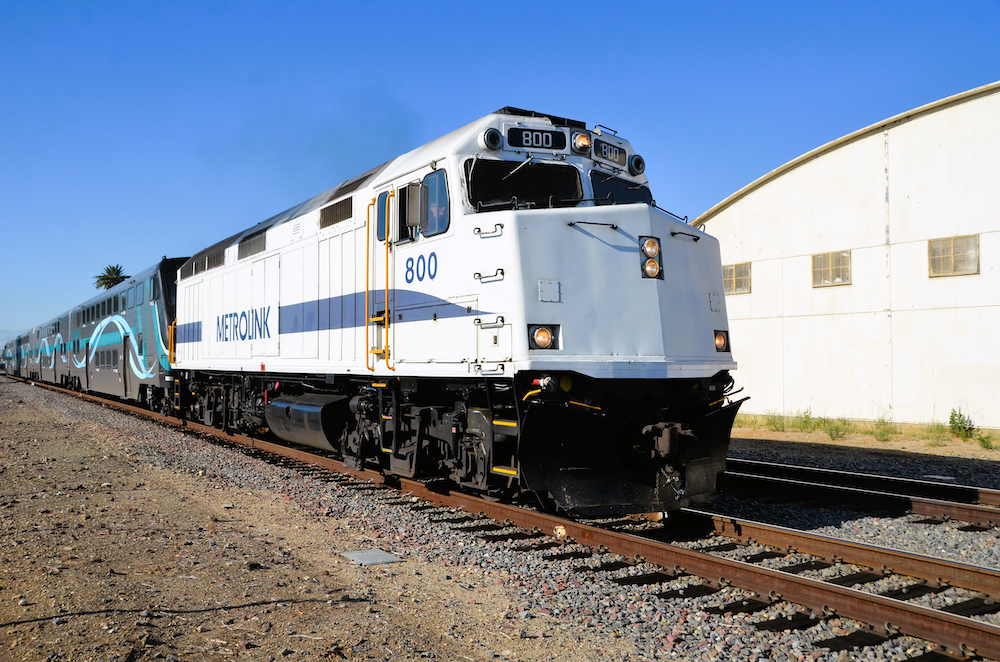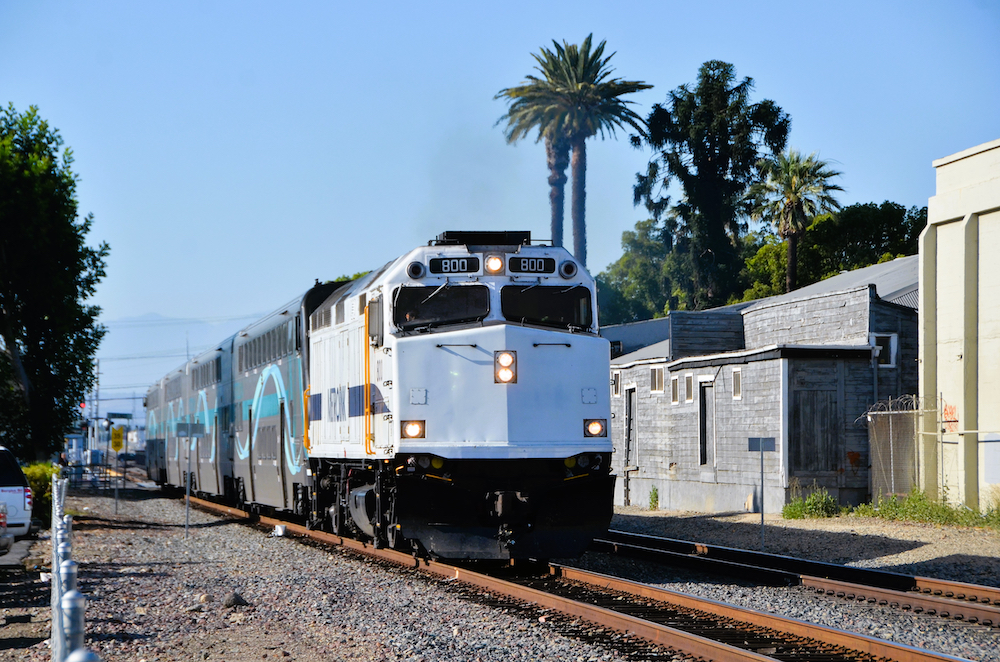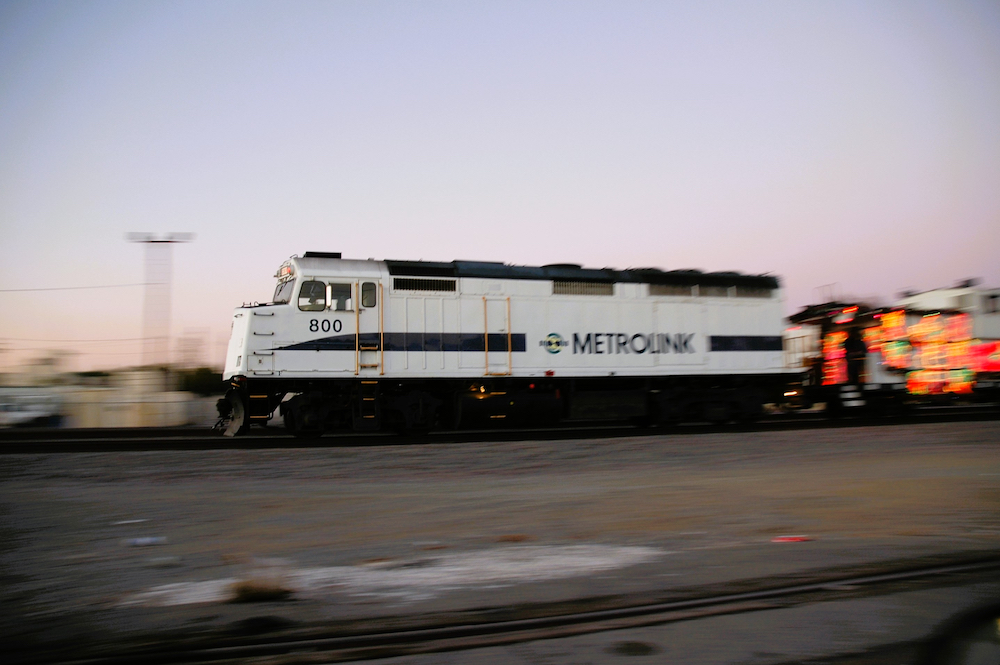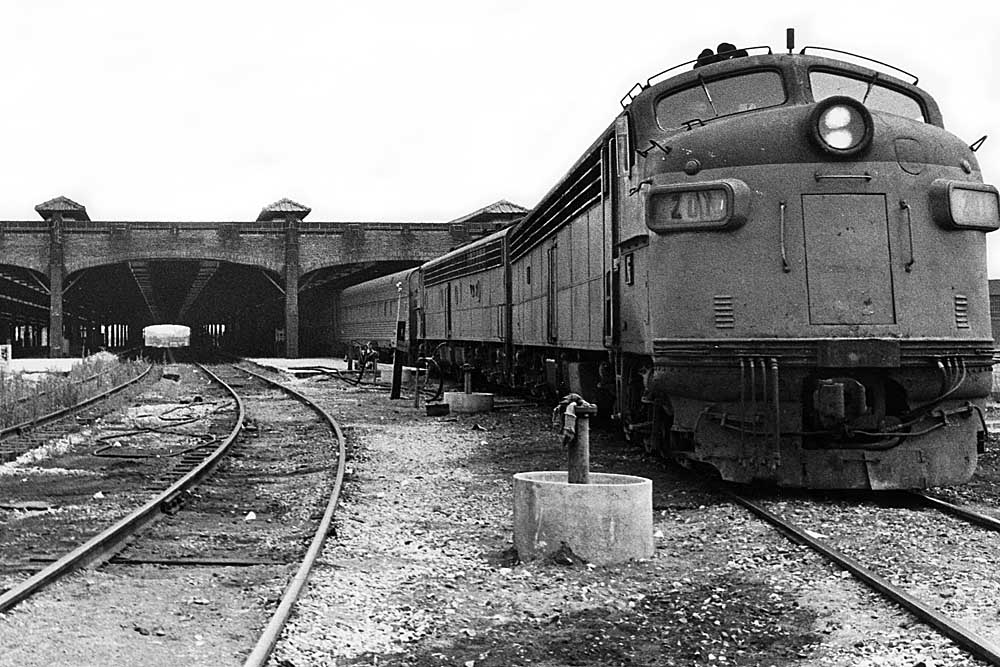
Metrolink’s lonely F40PH locomotive is one of a dwindling number of F40s.
It’s hard to believe once the EMD F40PH was the predominant motive power for Amtrak trains as well as many commuter lines. At Metrolink, No. 800 is today one of a kind.
The story starts in the years following the initial hodgepodge of hand-me-down diesels and passenger cars that graced the National Rail Passenger Corp.’s early roster, when the six-axle SDP40F became Amtrak’s first new diesels and the principal power of its long-distance fleet. The F40s were supposed to supplement the SDP40F fleet and take care of the shorter intercity routes. But a series of derailments involving the SDP40Fs saw most retired early and traded in for more F40s, with some components from the larger units reused in the smaller diesels.
No, I haven’t forgotten the handful of six-axle GE P30CHs — nicknamed Pooches — but they were just a fascinating sideshow to the seemingly endless wave of F40s being built by EMD. Starting in 1975, more than 375 copies were created in all versions for Amtrak and other passenger-commuter operations.
Whatever letters came after F40 indicate various offshoots and updates. Despite that, they are almost universally referred to as F40s. To confuse things a little more, another two dozen or so almost look-alike creations were built by Morrison-Knudsen.
Inevitably, as they matured — i.e., got older — a few began leaving Amtrak’s roster through mishaps or breakdowns. Those that could be rebuilt were, and others were simply shoved onto sidings for eventual disposition, their well-used carcasses having racked up millions of miles.
What has this to do with Metrolink and its acquisition of four F40s in the 2000s?
Management was trying to figure out the best way to supplement the original locomotive roster of EMD F59 variants hustling trains throughout Southern California. Buying new was one way to go, but internally, a number of operating people thought of creating their own locomotives tailored to Metrolink’s rigorous daily schedule. It was worth a shot.
So, imagine the looks on the faces of commuters who also happened to be fans when their Metrolink train passed the main locomotive shop and they saw this: a quartet of rather beat-up former Amtrak F40s adjacent to a small batch of former Union Pacific EMD SD60s! The yellow SD60s had a blue patch on their flanks with “Metrolink” on it.
The units were part of the same idea: Strip both models of their components and put the huskier SD60 technology in the bodies of the four-axle F40s, creating “Super F40s.” The idea had merit, and as they were all EMD units, the professional engineers believed a certain commonality would make the job doable.

Then came reality.
One of Metrolink’s engineers assigned to the project later confided that they hadn’t realized no locomotive rebuilder would get involved, considering all the engineering that would have been required for just four units. Or at least not at a price that would not break the project’s budget.
After regrouping, it was decided that the idea was superb when sitting around a table wondering ‘what if?’ but unworkable in the light of reality.
The SD60s and three of the F40s were sold off to locomotive rebuilders as fodder for other projects. The fourth F40, which was still in pretty good shape, unlike its trio of stablemates, was turned into a fully functional piece of Metrolink motive power.
It was rebuilt and repainted when shop crews had time, ultimately emerging in such pristine condition it looked like it had just left the factory. It was assigned the number 800.
Now an active unit on the roster, but still an oddball, the unit was used wherever and whenever as a pinch hitter, mostly on maintenance-of-way trains, specials such as the annual holiday train, and as a backup when a regular commuter train unit failed.
As a roster oddball, it regularly got the attention of fans whenever it was used, and many fans fittingly nicknamed it “The Tow Truck.”
The 800 is off the active roster now, a victim of California’s strict emissions standards. But it is still on the property, stored inoperable. There is a move to have it donated rather than to be ground up into razor blades. Originally Amtrak 396, who would have believed what a piece of living history the No. 800 has become?
For many local fans, seeing the 800 again would be a real treat. Count me in as one of them.














